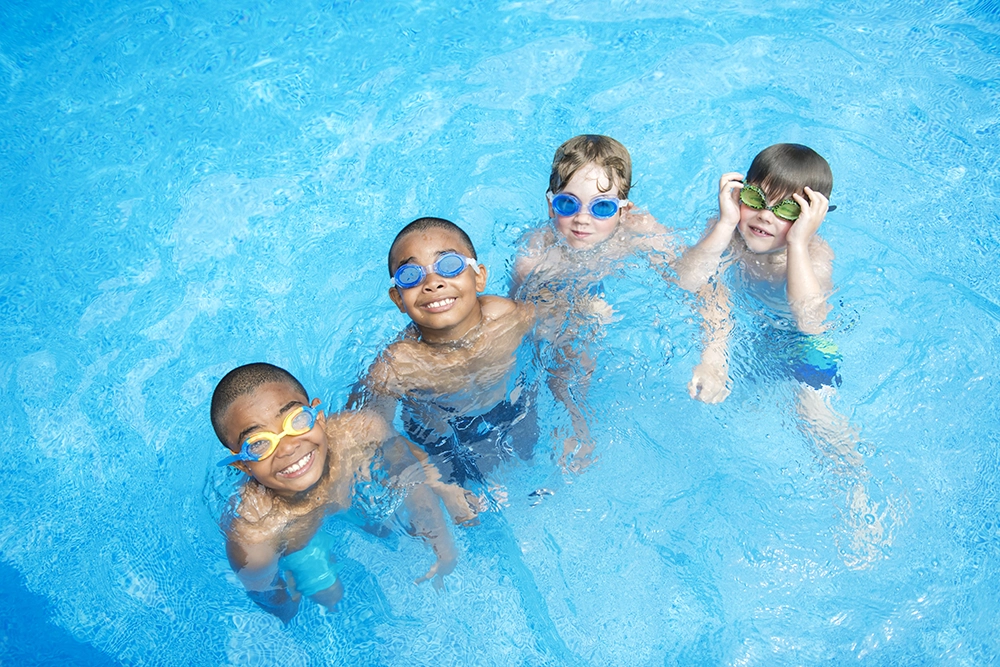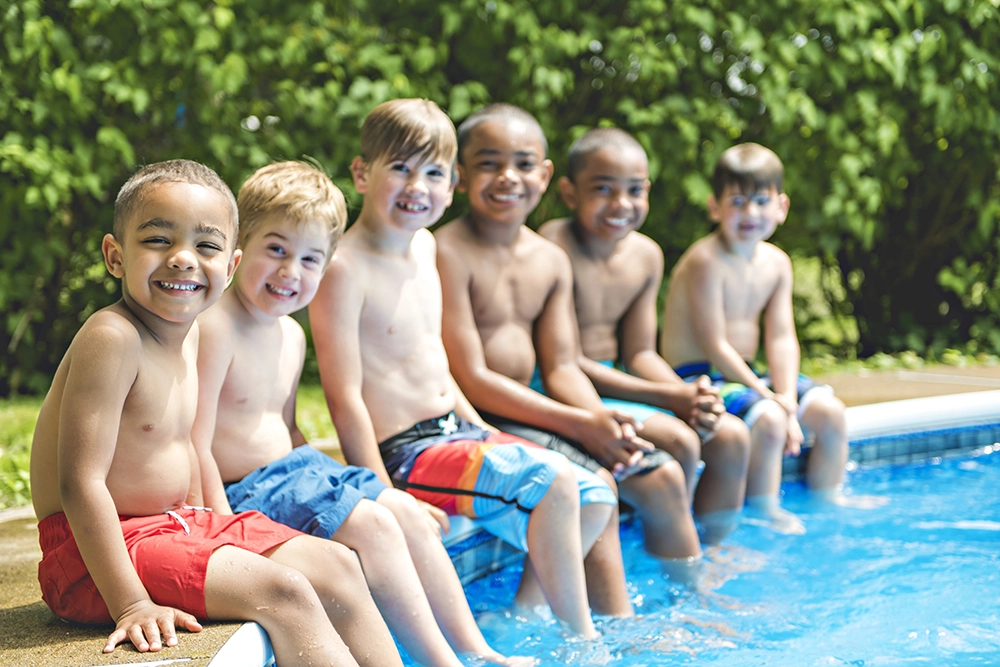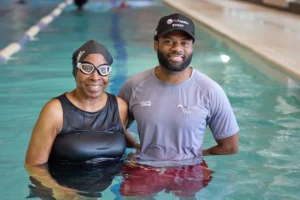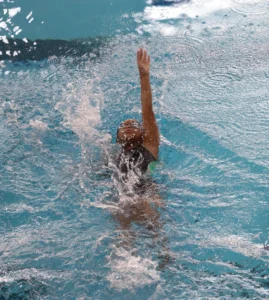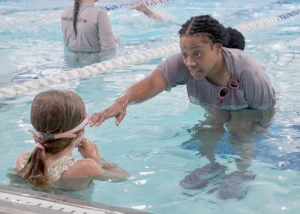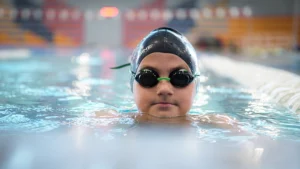Make Pool Safety Part of Your Planning
Summer pool parties are among the most treasured childhood memories. Families getting together, everyone eating seasonal dishes and fruit, the happy yelps of kids enjoying themselves, and all the splashing and laughing. These moments define summer for most of us.
However, they can also become one of the highest-risk environments for children around water. The latest U.S. Consumer Product Safety Commission (CPSC) findings are sobering: fatal child drownings increased 12% from 2020 to 2021, with 380 children fatally drowning. Children five years old and younger represent 75% of these deaths.
The tragic reality hits close to home. A six-year-old recently drowned at a year-end pool party in North Carolina, resulting in a $1.6 million settlement. The child was found unconscious on the pool bottom just 15-30 minutes after being dropped off.
This wasn’t a chaotic party with tons of people. This wasn’t a family without resources or education. This was a typical gathering where adults assumed someone else was watching. Since 81% of fatal child drownings happen in residential settings, swimming pool safety failures occur across all income levels, all types of families, and all kinds of celebrations.
No family is immune to these tragedies. But proper planning, swimming skills, and constant vigilance can prevent every pool party drowning.
The “Everyone’s Watching, No One’s Watching” Problem
The biggest danger at pool parties isn’t the pool itself— it’s the false sense of security that comes with having multiple adults present. When there are several adults around, each assumes someone else is supervising the children. This diffusion of responsibility creates deadly gaps in supervision.
From 2019 to 2021, an average of 358 children fatally drowned in pools or spas annually, with 6,500 visiting emergency rooms each year. These aren’t random accidents— they follow predictable patterns of failed supervision.
In the North Carolina case, party witnesses testified that neither the homeowners nor the other hosts were aware of or monitoring the child’s whereabouts, despite having been left in their care. The adults were focused on food preparation and party setup while children moved in and out of the pool area unsupervised.
This scenario repeats itself at pool parties everywhere. Adults get distracted by conversations, food preparation, or other hosting duties. Children slip away from supervision. Drowning happens silently—children don’t splash around or yell for help, and it takes just minutes.
Swimming Pool Safety Rule #1: One adult watches the pool at all times. That person gets no other jobs—no setup, no cleanup, no helping other kids during their watch.
Swimming Pool Safety Tips: What to Know Before You Set Up
Smart pool party safety begins well before guests show up. Good hosts set up systems that make watching easier and more reliable.
Essential Pre-Party Preparation:
- Designate a primary pool supervisor for the entire event
- Remove or secure all pool toys that could hide a child underwater
- Ensure all safety equipment is easily accessible and functional
- Brief all adults on the safety plan and their specific roles
- Establish clear pool rules and boundaries before children arrive
- Consider hiring a certified lifeguard for larger gatherings
- Install or verify proper safety barriers, fences, covers, and alarms
- Check that all drain covers meet federal safety standards
Pool Area Setup:
- Clear sightlines to all areas of the pool from the designated supervision spot
- Remove chairs and tables that block views of the water
- Set up a shaded supervision station with everything the watcher needs
- Keep rescue equipment (reaching tools, life rings) in designated spots
- Ensure emergency contact numbers are easily accessible
The North Carolina family had turned off their pool alarm because the children’s movement was setting it off during party preparation. This eliminated an important backup safety system. Keep all safety systems active during parties, even if they create minor inconveniences.
Understanding Pool Party Drowning Risks
Pool parties present unique drowning risks that are not present during regular family swim time. Understanding these risks helps hosts plan more effectively.
Increased Risk Factors at Pool Parties:
- Multiple children of different swimming abilities in the water simultaneously
- Adults are distracted by hosting duties and social conversations
- Children are excited and less likely to follow standard safety rules
- Non-swimming children wanting to participate with their friends
- Peer pressure leading to risky behavior
- Adults who don’t know the children’s actual swimming abilities
The Silent Nature of Drowning: Drowning occurs quickly and silently. Children don’t splash dramatically or call for help like in movies. They simply slip underwater and can’t surface. In the North Carolina case, expert testimony indicated the child was underwater for multiple minutes before discovery.
Warning Signs Adults Miss:
- Children moving from shallow to deep areas go unnoticed
- Non-swimmers following friends into deeper water
- Children who seem to be “playing” underwater but are actually in distress
- Changes in pool occupancy that go unnoticed
Effective Pool Safety Tips and Rules for Everyone
Effective swimming pool safety tips require clear, consistently enforced rules that all children and adults understand.
Non-Negotiable Safety Rules:
- Children must demonstrate their swimming ability to the pool supervisor before entering deep areas
- No running or rough play around the pool deck
- Children must ask permission before entering the pool area
- A buddy system is required for all non-swimmers
- Adults remain within arm’s reach of non-swimming children at all times
- No diving unless specifically approved by the supervisor in designated areas
For Different Age Groups:
- Ages 2-4: Constant adult supervision within arm’s reach, Coast Guard-approved life jackets required
- Ages 5-8: Active supervision with a designated adult watching at all times
- Ages 9-12: Clear boundaries established, check-ins every 15 minutes minimum
- Teens: Clear rules about diving, roughhousing, and helping with younger children
Pool Safety Pro Tip: Don’t let the rambunctious, risk-taking older kids take your eyes off the little ones playing quietly.
When Things Go Wrong: Emergency Preparedness
Even with the best planning and the best intentions, accidents can and do happen. Prepared hosts know exactly how to respond quickly and efficiently.
Emergency Preparedness Essentials:
- At least one adult trained in CPR and water rescue (bystanders are often first to aid drowning victims)
- Emergency contact numbers are immediately accessible
- Clear evacuation plan for getting help and clearing the pool
- First aid kit specifically stocked for water emergencies
- Phone with emergency numbers programmed and easily accessible
- Knowledge of how to perform CPR— this skill could save a child’s or an adult’s life
Signs of Trouble:
- A child missing from the pool area for any length of time
- A child who was swimming well suddenly struggling
- Any child underwater for more than a few seconds
- A child floating face-down, even if they appear to be playing
Response Protocol:
- Immediately remove the child from the water if there’s any question about their condition
- Call 911 first, then begin appropriate first aid
- Clear the pool area of other children
- Have someone direct emergency responders to the pool location
Creating a Safety-First Pool Party Culture
Pool party safety improves when entire communities prioritize it. Hosts and guests working together create safer environments for everyone.
For Hosts:
- Make safety planning as important as food and entertainment planning
- Don’t apologize for strict safety rules – be proud of them
- Share your safety plan with guests before the party
- Be willing to end activities if safety can’t be maintained
For Guests:
- Respect and support the host’s safety rules
- Stay actively involved in your children’s supervision
- Speak up if you notice unsafe situations
- Volunteer to help with safety duties if needed
The Best Swimming Pool Safety Tip: Prevention
Every pool party drowning is preventable. The very first step in prevention? Make sure everyone in your family has swimming skills. And we mean everyone, not just kids. Too many tragedies unfold while non-swimming adults watch helplessly from the sidelines, unable to assist in an emergency. Every adult attending a pool party should have basic swimming and rescue skills.
For children ages 6 months to 4 years old, our Infant Swimming Resource™ classes teach little ones essential water survival skills. And our Learn-to-Swim lessons build comprehensive swimming skills for ages four and up! In fact, many of our students learned to swim with us for the first time as adults!
We know you want to enjoy the best parts of summer— safely! Connect with us to enroll your entire family in our programs, securing their safety at your next pool party and building the skills that could save a life!

